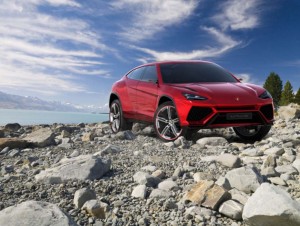For most of his tenure leading Ferrari, the late Sergio Marchionne pushed the supercar maker to up its production levels. This flew in the face of the policy in place before his arrival.
Ferrari’s production levels – as well as its new product introductions – rose steadily during his time in charge. However, there is a push by shareholders of supercar makers to return to the past policies of limiting production.
The idea is that exclusivity is what provides the value of these types of vehicles, and that ramping up production levels as Marchionne diluted the brand. Marchionne’s been gone for more than a year now and the “less is more” crowd is beginning to make inroads.
“We must not go on growing forever. We now have to consolidate these results and preserve exclusivity,” Lamborghini CEO Stefano Domenicali told reporters at an event inaugurating the company’s new paint and body shop at the Sant’Agata Bolognese plant in Italy.
(Lamborghini Says New Urus Will Soon Have Companion Model)
The company plans to sell a little more than 8,000 cars this year, which is “the right dimension of our company with our current product portfolio,” Domenicali said, according to Reuters.
That number is likely to rise to about 10,000 cars. Where the final number stops depends upon the addition of new product. However, shareholders will impact that decision as they will have plenty of input into that decision.
Lamborghini saw considerable growth in the first quarter of this year, likely attributed to the launch of itsUrus SUV. So far, analysts are forecasting an increase in revenue to around 1.7 billion euros, or $1.92 billion, up from 1.42 billion euros or $1.6 billion USD in 2018, Chief Financial Officer Paolo Poma told Reuters.
(Ferrari Plugs In, Charges Out with Its First-Ever Plug-In, the SF90 Stradale)
An electric supercar is not in its future at this time as “customers are currently not interested,” Poma said. However, Lamborghini is indeed seeking to add hybrid vehicles to its line-up by 2025, as it’s pressured to lower carbon dioxide emissions and meet future mandates. Limiting this kind of expansion is where the line will be drawn between the supercar archrivals.
As Lamborghini keeps a lid on growth, Ferrari is leaning into it, planning to introduce 15 new modes by 2022. Among those new vehicles are gasoline-electric hybrids as well as vehicles with smaller V-6 engines.
Of course, it will get into the sport-utility market. Ferrari told investors last September that it plans to launch an SUV, called the Purosangue, by 2022. The ute will compete with the Lamborghini Urus, Rolls Royce Cullinan and the Bentley Bentayga.
(Ferrari Offers V-8 Tribute with F8 Tribute)
Shareholders worried that this influx of new vehicles might cannibalize sales, need not worry as officials announced plans to strengthen its other revenue streams. The company plans to unveil what it calls its non-car business strategy, which will presumably seek to leverage the Ferrari brand name in areas outside the manufacturer of sports cars into life-style.

